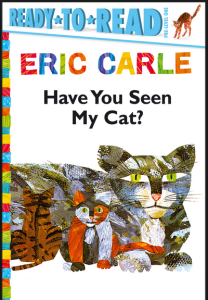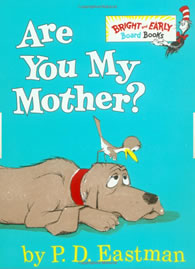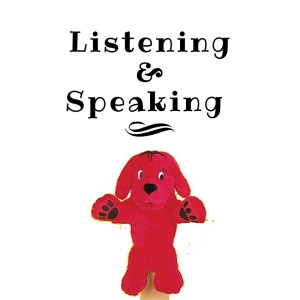Kindergarten reading lessons that include daily listening and speaking activities benefit children.
Kids hear the sounds and rhythms of language as you read to them and as they participate in poems, songs, and pocket chart reading activities. Listening and speaking experiences help children learn to read by increasing their knowledge and appreciation of oral and written language.
It’s also important for kids to develop listening and speaking skills in order to make friends, to understand those around them and to express themselves to others.
Include opportunities for children:
- to practice speaking clearly enough to be understood by friends and adults
- to speak and listen when playing – to ask for help, to share ideas, to solve problems and to express themselves
- to ask questions to make sense of their world
- to include a subject and verb, and simple connecting words when speaking
- to be introduced to communication skills such as making eye contact, not interrupting, and how to join a conversation politely
Activities to encourage listening & speaking
1. Read question and answer books as they model correct sentence structures.

Two favorites are:
Are You My Mother? by P. D. Eastman
Have You Seen My Cat? by Eric Carle
2. Model show and tell to encourage clear speaking
Bring an interesting object to show the children and then explain that you are going to show them the incorrect way to speak about it. Ask them to guess what you are doing wrong.
Cover the item with your hands when you show it, mumble when you speak, put your head down as you talk, look away as you talk.
The children find this very funny! Then make a big deal of showing the item the correct way, modeling one correction at a time. Ask them to tell you what you did differently. Model this a few times in the beginning of the year.
3. Plan opportunities for children to speak

Many children find a “sharing chair” fun. They all have a turn (once again if a child is shy give them time until they feel more comfortable) sitting in the chair and showing something they accomplished that day, a journal story, a craft or a bit of news.
Use a timer if children ramble on too long. Most children can only listen to four or five of their peers per session before their attention begins to wander.
4. Play “Pass the Block”
After reading a story a few times (over a period of a few days), have the children sit in a circle. Teach them that you are going to pass a block around and that the child with the block gets to speak and ask questions about the story or share what they liked about the story while the rest of the children practise listening.
Talk about – what does listening to each other look like, don’t assume children know. As above model the behaviour. Ask a child to answer a question you ask, such as, “Tell me about your family,” and as they answer, poke the child next to you, don’t make eye contact, hum, or pick at the rug. Discuss how that makes the speaker feel.
Then model listening behaviors, such as looking at the person speaking, nodding head in agreement, lips closed and sitting fairly still. Remember this is a learning process for children (and for a lot of adults!)
- Start by making a game of this process as it takes some time for children to remember that only the block holder gets to talk.
- Explain the teacher’s role. The teacher will interrupt if the speaker takes too long and/or will tap the arm of any children who speaks out of turn to remind them it is not their turn to talk. This can be tricky as children start tapping other children who then get annoyed and chaos happens. Stress it’s the teacher’s job only!
- Model correct passing of the block (kids will throw it).
- Some children will not feel comfortable speaking in groups at first. Let them pass the block to the next person until they are ready.
 Tip!! If your class is large have a deck of cards with the children’s names on them. Rotate the cards so all get equal amounts of turns to speak over a period of a few days. It is unrealistic to have young children sit quietly and listen to 20 children voice their thoughts!
Tip!! If your class is large have a deck of cards with the children’s names on them. Rotate the cards so all get equal amounts of turns to speak over a period of a few days. It is unrealistic to have young children sit quietly and listen to 20 children voice their thoughts!
5. Model speaking in sentences
When children speak in incomplete sentences teach them how to express themselves in complete sentences. If the child says, “Gimme book”, have them say “Please may I have a book.”
6. Have class meetings
Structure class meetings as part of your kindergarten reading lessons. Class problems are a great opportunity to have a meeting. Give children language to express themselves using “I” statements. “I felt upset when…” “I didn’t like it when…” “I want Rose to stop…”.
After establishing what the problem is, encourage all the children to think of a solution to questions such as, “In what ways might we solve the problem of….?”.
7. Teach with puppets
Puppets keep the children’s attention and are great for teaching kids how to correctly express themselves and help them feel empowered to change circumstances.


